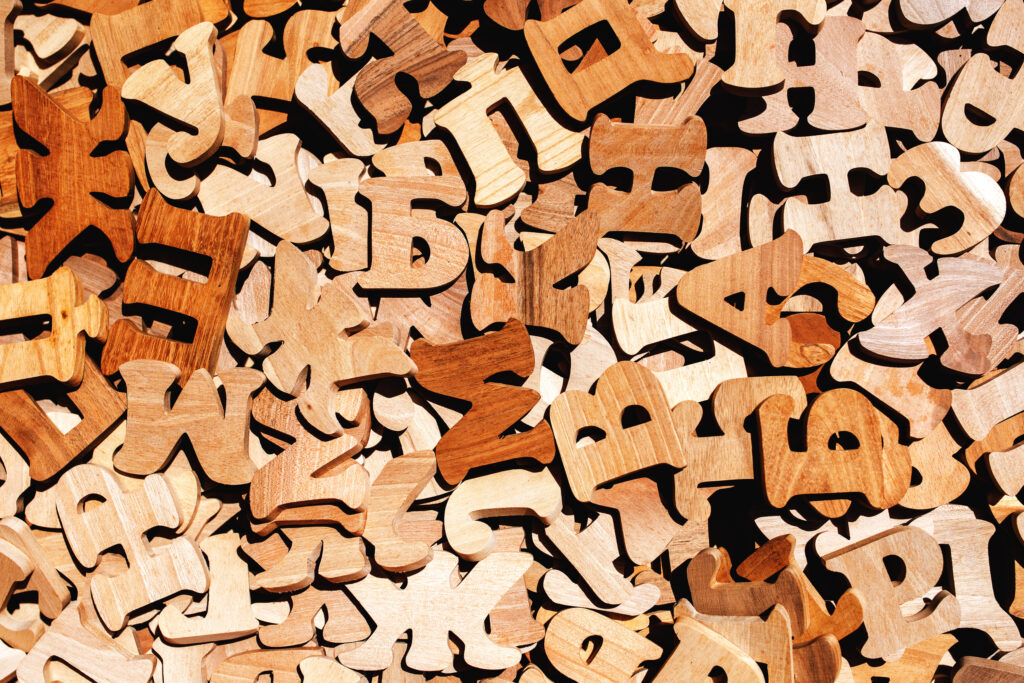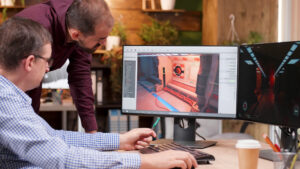A Beginner’s Guide To Typography In Graphic Design

Typography is a fundamental element of graphic design that involves the arrangement and selection of fonts to create visually appealing and effective communication. It plays a crucial role in conveying messages and establishing a distinct visual style. The legibility, readability, and accessibility of typography are vital for ensuring that readers can effortlessly understand and engage with the content.
By choosing the right fonts, spacing, and hierarchy, graphic designers can enhance the user experience and create professional-looking designs. Whether it’s digital designs or print materials, understanding the basics of typography is essential for creating cohesive and visually striking compositions. In this beginner’s guide to typography in graphic design, we will explore the principles, rules, and different types of fonts to help you master the art of typography and create stunning designs.
What is Typography?
Typography is a fundamental aspect of graphic design that plays a vital role in creating successful and visually pleasing compositions. It involves arranging typefaces to ensure legibility, readability, and visual appeal. Factors such as letter shape, spacing, and overall arrangement are carefully considered in the process.
By understanding the basics of typography, graphic designers can create professional-looking designs that captivate their audience and convey a message effectively. In this beginner’s guide to typography in graphic design, we will explore the principles, rules, and common typefaces that form the foundation of this art form.
The Principles of Typography
The principles of typography are based on arranging a message in a composition that is both readable and aesthetically attractive. Typography plays a crucial role in graphic design as it effectively communicates information and conveys the desired message to the audience.
One of the key decisions that designers make is choosing the appropriate typeface for a particular design. Different typefaces have distinct personalities and evoke different emotions, so it is important to select a typeface that aligns with the overall tone and purpose of the design.
Another important aspect is determining the point size of the text. The point size affects the legibility of the text and can impact how the design is perceived. It is essential to find the right balance between readability and visual impact.
Adjusting kerning and line spacing is also vital for creating a visually pleasing composition. Kerning refers to the adjustment of the spacing between individual letters, while line spacing determines the vertical space between lines of text. Proper kerning and line spacing ensure that the text is easy to read and visually balanced.
Lastly, creating a layout that makes sense is essential in typography. The arrangement of the text should guide the reader’s eyes and reinforce the hierarchy of information. By strategically using elements such as white space and visual hierarchy, designers can create a professional-looking design that effectively conveys the intended message.
Types of Typefaces
There are several types of typefaces that designers can choose from when creating their designs. Each typeface has its own distinct characteristics and style, making it suitable for different purposes and design styles.
Serif typefaces are known for their small lines or strokes that extend from the ends of the main strokes of each letter. They are often used for body text because the serifs help guide the reader’s eyes along the lines of text, improving readability. Time New Roman is a popular example of a serif typeface.
Sans-serif typefaces, on the other hand, do not have these small lines or strokes. They have a clean and modern look, making them ideal for digital displays and designs with a minimalist aesthetic. Arial and Helvetica are commonly used sans-serif typefaces.
Script typefaces imitate cursive handwriting and are often used to add a sense of elegance or personal touch to a design. They are best suited for headings or short pieces of text where legibility is less important than aesthetics. Some popular script typefaces include Brush Script and Monotype Corsiva.
Display typefaces are designed to be attention-grabbing and used for headlines or titles. They often have unique and decorative letterforms that add personality to a design. Examples of display typefaces include Impact and Bebas Neue.
Blackletter typefaces have dramatic and ornate strokes, inspired by Gothic or Old English calligraphy. They are often used to evoke a sense of tradition or history. Blackletter typefaces are not commonly used in modern design but can be seen in vintage-inspired or formal designs.
Understanding the different types of typefaces allows designers to select the appropriate one for their desired style and purpose, ensuring a cohesive and visually appealing design.
Designing with Typography
Designing with typography is a crucial aspect of creating visually appealing and readable text in graphic design. Typography plays a significant role in conveying the tone, style, and message of a design.
The choice of typeface is vital in setting the overall mood and determining the readability of the text. Consider factors such as the purpose of the design, the target audience, and the desired aesthetic when selecting a suitable typeface. Additionally, adjusting the text size and weight helps in creating a hierarchy and emphasizing important information.
Managing kerning, the spacing between individual letters, and line spacing, the spacing between lines of text, is essential for readability. Too tight or too loose kerning can impact legibility, while appropriate line spacing ensures ease of reading.
Creating a layout that is aesthetically pleasing and readable involves utilizing the principles of visual hierarchy, which includes the strategic use of font sizes, weights, and styles to guide the reader’s eye throughout the design.
By carefully considering these factors and designing with typography in mind, graphic designers can create text that is not only visually appealing but also easily readable, ensuring effective communication with the audience.
The Basics of Typography Design
Typography design plays a crucial role in creating visually appealing and readable graphics. Understanding the basics of typography is essential for graphic designers to effectively communicate their message.
The selection of suitable typefaces is the first step in typography design. Consider the purpose of the design and the target audience when choosing typefaces. Different typefaces have distinct personalities and convey different messages. Experiment with a variety of serif, sans-serif, and script fonts to find the right fit for your design.
Adjusting text size, weight, kerning, and line spacing is vital for creating a well-balanced and readable typographic layout. Text that is too small or too large can hinder readability, so finding the right size is crucial. Similarly, managing the spacing between individual letters (kerning) and lines of text (line spacing) is essential for legibility.
Creating a visually appealing layout involves understanding and implementing the principles of visual hierarchy. Use different font sizes, weights, and styles to guide the reader’s eye and highlight important information. Experiment with text alignment, hierarchy, and white space to achieve an aesthetically pleasing design.
Modern typography design tools and technologies have made the process more accessible and efficient. Designers can easily manipulate and customize typefaces using digital tools. Embrace these advancements to enhance your typography designs and create stunning visuals.
By mastering the basics of typography design, you can effectively communicate your message, create a visually appealing layout, and capture the attention of your audience. Experiment with different typefaces, adjust text size and spacing, and embrace modern tools to elevate your typography designs.

Conclusion
In conclusion, typography plays a vital role in user interface design, allowing designers to effectively communicate messages and create visually engaging experiences. By selecting the right typefaces and mastering the art of typography, you can elevate your design work and become a fantastic UI designer. Take inspiration from your favorite websites and observe the typeface choices they make to enhance their designs. Remember, typography is not just about choosing fonts; it’s about understanding how to manipulate and customize typefaces to create harmonious and impactful visuals. So, embrace the power of typography and keep honing your skills to create captivating user experiences.






